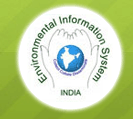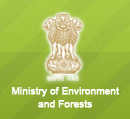Documents and Data from Ministry of Rural Development
(2006-07) in Panchayat and related issues
Department of Rural Development
Highlights:
Adequate Budgetary support – Allocation of funds for the rural development programmes has been enhanced to Rs. 77,474 crore for the Tenth Plan as against Rs. 42,87 crore during the Ninth Plan. The budget outlay has also increased from Rs. 24,480 crore in 2005-06 to Rs.31, 444 crore in the 2006-07.this has further increased to Rs. 36,560 crore for the financial year 2007-08.
National Rural Employment Guarantee Act (NREGA) completes one year – During the period (up to Feb., 2007)
- 3.58 crore-job cards have been issued.
- 1.70 crore households have demanded employment.
- 1.65 crore-house holds have been provided employment.
- 62.01 crore of mandays have been generated.
- 6.80 lakhs work have been taken up, out of which 2.80 lakhs of works have been complete and 4.0 lakhs of works are in progress.61.6 % are water based works, 24.65% are roads and 13.75% are other works.
- Key elements of the Act:
- - Households domiciled in a village (Not just those below the poverty line) are entitled to register for seeking employment.
- - Job cards containing photographs should be issued to all entitled applications within 15days of application.
- - Demand for work from job cardholders should be acknowledged and work allotted within 15 days.
- - The instrument for allocating employment is unskilled manual work.
- - Work taken up should be predominantly for water and soil conservation, afforestation and land development.
- - 50% of the works should be implemented by gram panchayats.
- - The shelf of projects for a village should be recommended by the gram sabha and approved by the zilla panchayat.
- - No contractors and machinery should be used.
- - Labour intensive works with 60% wage component should be taken up.
- - Payment should be made within 15 days. The State’s notified minimum wage for agricultural labour is to be applied.
The Ministry of Rural Development is also committed to fulfill the goals of Bharat Nirman by achieving the three targets of rural connectivity, rural housing and rural water supply within the prescribed time frame of 2005 to 2009.
- Rural Housing as a part of Bharat Nirman – Under Indira Awass Yojana, 60 lakh houses to be constricted. Out of which, 23.68 lakh houses have been constructed during 2005-06 and 2006-07 (up to Feb.2007) and 9.14 lakh houses are under construction. In a major initiative to impart transparency to the selection process ‘permanent waitlist’ is being prepared for selection of beneficiaries under IAY.
- Rural Roads as a part of Bharat Nirman – Under Pradhan Mantri Gram Sadak Yojana (PMGSY) the major goals are to connect 66,802 habitations with all weather roads, to construct 1,46,185 kms of new rural roads and to upgrade and modernize 1,94,130 kms of roads. In the current financial year i.e. 2006-07, nearly 15,000 km all-weather roads have been completed. New connectivity has been provided to 3,400 habitations.
- Rural Drinking Water as a part of Bharat Nirman – By 2009, 3052 NC habitations, 38,894 PC habitations, 2,52,060 slipped back habitations and 1,47,576 quality affected habitations will be covered. Under Bharat Nirman, so far, 1826 NC habitations, 14,666 PC habitations, 1,18,535 slipped back habitations and 5151 quality-affected habitations have been provided with safe drinking water.
Sampoorna Grameen Rozgar Yojana: SGRY was launched on 25th September 2001 by merging the on-going schemes of Jawahar Gram Samridhi Yojana (JGSY) and Employment Assurance Scheme (EAS).
- Objectives: The objectives of the programme are to provide additional wage employment in the rural areas as also food security, alongside the creation of durable community, social and economic infrastructure in the rural areas. The programme is self-targeting in nature with special emphasis to provide Wage Employment to women, scheduled castes, scheduled tribes and parents of children withdrawn from hazardous occupations.
- Strategy: The Scheme is exclusively implemented by the Panchayati Raj Institutions (PRIs). Programme was implemented in two streams till 2003 –04.Now, from 2004-05 the programme is implemented as one integrated Scheme. The programme resources are shared by all the tiers viz District Panchayat, Intermediate Panchayat and the Village Panchayat in the proportion of 20:30:50.The details of activities/works taken up by the PRIs are as under:
- District Panchayats – 20% of the resources are reserved at the District level and are to be utilized by the District Panchayats /DRDAs preferably in the areas suffering from endemic labour exodus/areas of distress as per the Annual action Plan approved by the District Panchayats/DRDAs.
- Intermediate Level Panchayats – 30% of the resources are allocated among the Intermediate Level Panchayats.
- Village Panchayats – 50% of the resources are allocated among the Village Panchayat for generation of supplementary wage employment and creation of demand driven community village infrastructure, which includes also durable assets to enable the rural poor to increase opportunities for sustained employment.
- Salient Features of the SGRY:
- The Sampoorna Grameen Rozgar Yojana (SGRY) is Centrally Sponsored Scheme (CSS). It envisages for creation of additional wage employment of 100 crores mandays with a yearly outlay of Rs.10, 000 crores.
- Under the Scheme, food grains are being provided every year, free of cost, to the State Governments and union Territory Administrations.
- The cost of the cash component of the programme is shared by the Centre and state in the ratio of 75:25.
- About 100 crore mandays of employment are envisaged to be generated every year in the rural areas.
- Every worker seeking employment under the SGRY will be provided minimum 5 kgs.of food grains (in kind) per mandays as part of wages. However, from 1.1.2005 to 31.3.2006, food grains have been provided 3 kgs to the labourer due to shortage of food grains. Again for the same reason, food grains will be provided 3 kgs per manday 2006-07.
- The balance of wages will be paid in cash so that they are assured of the notified minimum wages.
- The State Governments and UT Administrations will be free to calculate the cost of food grains (Paid as part of wages) at either BPL rates or APL rates or anywhere between the two.
- Panchayati Raj Institutions (PRIs) can take up works as per the felt need of the areas.
- 200 identified districts have been subsumed in the National Rural Employment Guarantee Act (NREGA) with effect from 1.4.2006, SGRY is being implemented to remaining to remaining 388 districts expect Chandigarh and Delhi.
Swarnjayanti Gram Swarozgar Yajana: The largest Self-Employment Programme for Rural Poor. The programme was started from 1st April 1999.
- Objective: To bring the assisted BPL family above the poverty line by ensuring appreciable increase in income over a period of time.
- Main Features:
- - Emphasis on mobilization of rural poor to enable them to organize into Self help groups.
- - SGSY- a credit-cum-subsidy scheme where credit is critical component and subsidy is only an enabling element.
- - Participatory approach in Selection of key activities.
- - Project approach for each key activities.
- - Emphasis on development of activity clusters to ensure proper forward and backward Linkages.
- - Strengthening of groups through Revolving fund Assistance (RFA)
- - Training of beneficiaries in group processes and skill development-integral part of the project.
- - Marketing support with emphasis on market research, upgradation/ diversification of products, packaging, creation, creation of market facilities, etc.
- - Provision for development of Infrastructure to provide missing critical link. 20% fund (in case of NE State 25%)is earmarked for infrastructure development.
- - Active role of NGOs in formation and capacity building of SHGs.
- - Focus on Vulnerable Groups i.e. S.C, S.T, Women and Disabled.
- - 15% fund earmarked for Special Projects to ensure a time bound programme for bringing specific number of BPL families above poverty line.
- Performance of scheme since inception (up to December, 2006)
- i. No. of SHGs formed: 241316
- ii. No. of Swarozgaries assisted Total: 703737
(a) SHGs Swarozgaries: 4131949
(b) Individual Swarozgaries: 3271788
- Subsidy disbursed: Rs.501.98 crores
- Credit disbursed: Rs.10705.16 crores
- Per capita Investment: Rs. 21818/-
(Av. / Per year.)
Provision of Urban Amenities in Rural Areas: The Scheme of urban Amenities in Rural Areas (PURA) was announced by the Hon’ble President of India to Bridge the rural-urban divide and achieve balanced socio-economic development.
- Aims: It aims to meet the gaps in physical and social infrastructure in the identified rural clusters consisting of 10-15 villages around towns with population of one lakh or less to further their growth potential. The identified areas of intervention and support are:
- Road, transportation and power connectivity.
- Electronic connectivity in the form of reliable telecom, Internet and IT Services.
- Knowledge connectivity in the form of good educational and training institutions.
- Market connectivity that would enable farmers to get the best price for their produce.
- Provision of drinking water supply and upgradation of existing health facilities.
- Ministry of Rural Development in consultation with Planning Commission decided to launch a pilot phase for implementation of PURA in seven States selecting one cluster of 10-15 villages in each State. The seven clusters selected for the pilot phase are Rayadurg (district Annanthpur in the State of Andra Pradesh), Gohpur (district Sonitpur in the State of Assam), Motipur (district Muzzafarpur in the state of Bihar), Basmath (district Hingoli in the state of Maharastra), Kujunga (district Jagatsinghpur in the state of Orissa), Shahpur (district Bhilwara in the state of Rajasthan) and Bharthana (district Etawah in the state of Utter Pradesh).
- A note on restructured PURA Scheme prepared by this ministry was considered by Committee of Secretaries (COS) in its meeting on 19th September 2006.COS recommended implementation of PURA as a regular scheme during the 11th five year plan covering all the districts in rural areas.
National social Assistance Programme and Annapurna Scheme:
The (NSAP) comprising of National Old Age Pension Scheme (NOAPS), National Family Benefit Scheme (NFBS) and National Maternity Benefit Scheme (NMBS) came into existence w.e.f.15.8.1995 for providing social assistance benefit to poor households in the case of old age, death of the primary breadwinner and maternity.
District Rural Development Agency Administration: The primary objective of the Scheme of DRDA Administration is to professionalise the DRDA so that they are able to effectively manage the anti-poverty programmes of the Ministry of Rural Development and interact effectively with other agencies. The DRDAs are expected to coordinate effectively with the line departments, the Panchayati Raj Institutions, the banks and other financial institutions, the NGOs as well as technical institutions with a view to gathering support and required for poverty reduction effort in the district.
- Each DRDA should have the following wings:
- Self-employment Wing
- Women’s Wing
- Wage employment wing
- Watershed Wing
- Engineering wing
- Accounts wing
- Monitoring and Evaluation wing
- General Administration
Department of Land Resources
Highlights:
Integrated Wastelands Development Programme:IWDP, a Centrally Sponsored Programme, has been under implemented through watershed approach under the Common Guidelines for Watershed Development. The development of wastelands and degraded lands under the programme is expected to promote the generation of employment in the rural areas besides enhancing the participation of people at all stages leading to sustainable development of land and equitable sharing of the benefit.
- Objectives: the programme is aimed at integrated development of wastelands /degraded lands based on village/micro watershed plans.
- Developing wastelands/degraded lands on watershed basis, keeping in view the capability of land, site conditions and local needs.
- Promoting the overall economic development and improving the socio-economic condition of the poor and disadvantage sections inhabiting the programme areas.
- Restoring ecological balance by harnessing, conserving and developing natural resources i.e. land, water, vegetative cover.
- Encouraging village community for:
- Sustained community action for the operation and maintenance of assets created and further development of potential of the natural resources in the watershed.
- Simple, easy and affordable technologies solution and institutional arrangements that make use of, and built upon, local technical knowledge and available materials.
- Employment generation, poverty alleviation, community empowerment and development of human and other economic resources of the village.
- Coverage: The projects under the programme are generally sanctioned in the block not covered by DDP and DPAP.At present, the project under the Programme are being implemented in 463 districts of the country. The revised Guidelines prescribe a greater role for Panchayati Raj Institutions (PRIs), Self-Help Groups (SHGs) and User-Groups (UGs) particularly the landless, the Scheduled Castes (SCs) and Scheduled Tribes (STs) and other backward classes, in watershed projects.
Drought Prone Areas Programme: DPAP is the earliest area development programme launched by the Central government in 1973-74 to tackle the special problems faced by those fragile areas, which are constantly affected by severe drought conditions.
- Objectives: The basic objective of the programme is to minimize the adverse impacts of drought on the production of crops and livestock and productivity of land, water and human resources thereby ultimately leading to the drought proofing of the affected areas.
- Aims: The programme aims at promoting overall economic development and improving the socio-economic condition of the resource poor and disadvantaged sections inhabiting the programme areas through creation, widening and equitable distribution of the resource base and increased employment opportunities.
Department of Drinking Water Supply
High Lights:
Rural Water Supply and Sanitation Programme:
- Introduction: Rural drinking Water Supply is a state subject and has been included in the Eleventh Schedule of the Constitution among the subjects that may be entrusted to panchayats by the states. A national water supply and sanitation programme was introduced in the social sector in the country in 1954.The Government of India provided assistance to the states to establish special investigation divisions in the Forth Five Year Plan to carry out identification of problem villages. To accelerate the pace of coverage of problem villages, the Accelerated Rural Water Supply Programme (ASWSP) in 1972-73 to assist States and Union Territories with 100% grants-in aid to implement drinking water supply schemes in such villages.
- Role of Community / Panchayati Raj Institutions (PRIs): With a view to promote involvement of user groups/ panchayats in the selection and implementation of drinking water schemes and for subsequent operation and maintenance (O & M), the State Governments are being encouraged to sign an MOU with Govt. of India before commencement of XIth Plan. The 12th Finance Commission has recommended that the PRIs should recover at least 50% of the recurring cost in the form of user charges.
- Bharat Nirman: drinking water supply is one of the six components of Bharat Nirman, which has been conceived as a plan to be implemented in four years, from 2005-06 to 2008-09 for building rural infrastructure.
- Swajaldhara: Principals of Swajaldhara
- Adoption of demand responsive, adaptable approach along with community participation based on empowerment of village to ensure their full participation in the project through a decision making role in the choice of the drinking water scheme, planning, design, implementation, control of finances and management arrangements
- Full ownership of drinking water assets with appropriate level of panchayats.
- Panchayats/communities to have the powers to plan, implement, operate, maintain and manage all Water Supply and Sanitation schemes.
- Partial capital cost sharing either in cash or kind including labour or both, 100% responsibility of operation and maintenance by the users.
- An integrated service delivery mechanism
- Taking up conservation measures through rainwater harvesting and ground water recharge system for sustained drinking water supply.
- Rural Sanitation: The Total Sanitation Campaign guidelines have been modified following approval by the Cabinet Committee on Economic Affairs on March 9,2006.As per the revised TSC guidelines.
- Unit cost of Individual household Toilets.
- Revision in funding pattern for school and Aganwadi toilets.
- Introduction of solid and Liquid Waste Management as a component of TSC.
- Provision of Revolving fund for self Help Groups and milks Cooperative Societies.
|





